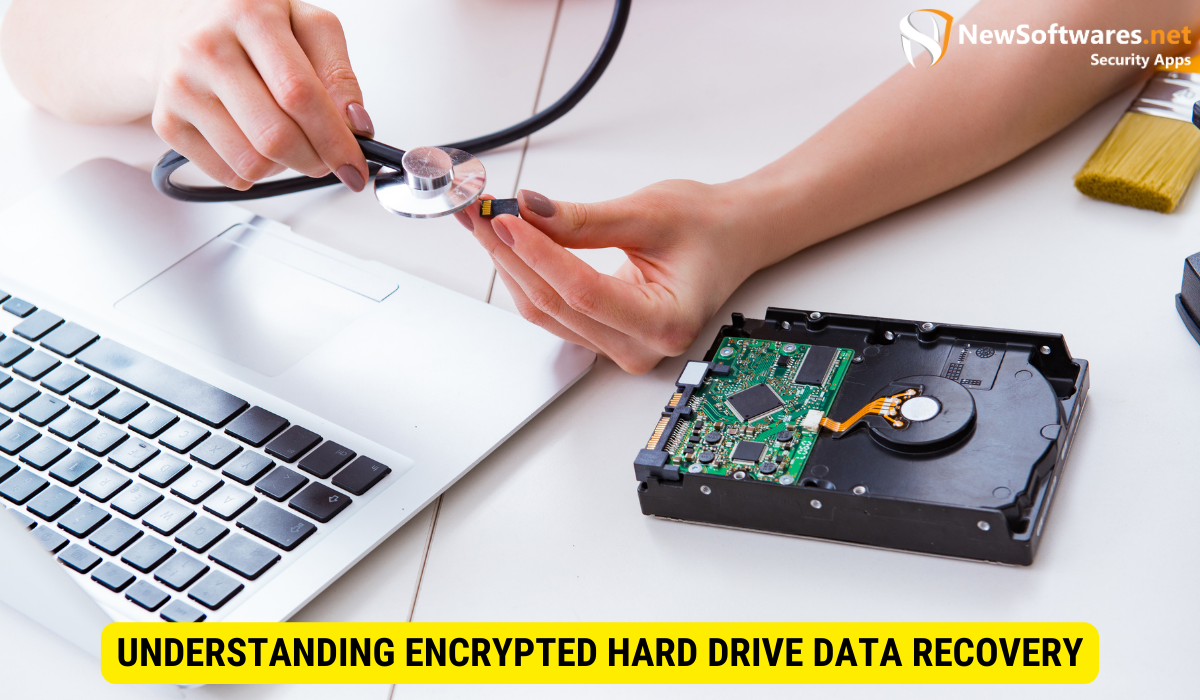Encrypted hard drive data recovery with hot swappable solutions is crucial for individuals and businesses facing data loss challenges. Hot swapping allows for the seamless replacement of faulty hard drives, speeding up the recovery process without system shutdown. Data recovery from encrypted drives requires specialized techniques and tools to bypass or decrypt encryption layers. While risks exist, such as data corruption and legal considerations, seeking professional data recovery assistance is advisable. Proper care and maintenance practices ensure hard drive longevity, reducing the risk of drive failure.
In today’s digital age, data security and privacy have become paramount concerns. Individuals and businesses alike are increasingly relying on encrypted hard drives to protect their sensitive information from unauthorized access. However, with the rise in encryption technologies, the need for efficient encrypted hard drive data recovery solutions has also grown. In this article, we will delve into the world of encrypted hard drive data recovery and explore the concept of hot-swappable solutions.
Understanding Encrypted Hard Drive Data Recovery

Data encryption plays a important role in safeguarding insightful information from potential threats. When data is encrypted, it is transformed into a format that can only be deciphered with a specific encryption key. While encryption provides an extra layer of security, it can also pose a dare when it comes to data recovery. In order to recover encrypted data from a hard drive, specialized techniques and tools need to be employed.
The Basics of Data Encryption
Data encryption is a method that involves converting plain text into ciphertext using cryptographic algorithms. By encrypting data, it becomes unreadable and unintelligible to anyone without the correct decryption key. This ensures that even if the hard drive falls into the wrong hands, the data remains protected.
There are two types of data encryption: symmetric & asymmetric encryption. Symmetric encryption uses similar key for both encryption and decryption. On the other hand, asymmetric encryption use two dissimilar keys for encryption and decryption: the public key for encoding & a private key for decryption.
The significance of Data Recovery
Data recovery is the progression of retrieving lost, deleted, or inaccessible data from storage devices. Whether due to unintended deletion, hardware failure, or software issues, data loss can have significant consequences for individuals and businesses. In the case of encrypted data, the recovery process becomes even more complex due to the additional layer of security.
The importance of data recovery cannot be understated. It is not only crucial for individuals who may have lost precious memories or valuable files but also for businesses that rely on critical data for their operations. With the right tools and techniques, encrypted hard drive data can be successfully recovered, providing a lifeline for those affected by data loss.
The Concept of Hot Swappable Solutions
The concept of hot swappable solutions is closely associated with the field of data recovery. It involves the ability to replace or remove a hard drive from a computer system without having to shut down the system or interrupt its operation. This is particularly useful when dealing with encrypted hard drives, as it allows for a more streamlined and efficient recovery process.
Defining Hot Swapping in Data Recovery
Hot-swapping refers to the process of adding or removing hardware components from a computer system while it is still running. In the context of data recovery, hot swappable solutions enable technicians to connect and disconnect hard drives without the need for system shutdown.
Hot swappable solutions often involve the use of specialized hardware, such as hot swappable drive bays or docking stations. These devices allow for quick and easy removal and replacement of hard drives, minimizing downtime and speeding up the recovery process.
Benefits of Hot Swappable Solutions
There are several benefits associated with hot swappable solutions in the context of encrypted hard drive data recovery:
- Efficiency: Hot swapping allows for faster recovery times by eliminating the need to shut down and restart the computer system.
- Flexibility: The ability to hot-swap drives provides flexibility in terms of testing and accessing multiple drives during the recovery process.
- Risk Reduction: Hot swappable solutions minimize the risk of further damage to the hard drive or data loss during the recovery process.
- Scalability: Hot swapping enables technicians to easily expand storage capacity by adding additional hard drives as needed.
- Cost Savings: By minimizing downtime and streamlining the recovery process, hot swappable solutions can potentially lead to cost savings for businesses.
The Process of Recovering Encrypted Data
The process of recovering encrypted data from a hard drive involves several stages, each requiring careful attention and expertise. Whether utilizing hot swappable solutions or traditional recovery methods, the following steps are typically involved:
Initial Steps in Data Recovery
The initial steps in data recovery include assessing the extent of data loss and determining the best course of action. This includes identifying the cause of data loss, evaluating the condition of the hard drive, and analyzing the available recovery options.
In the case of encrypted data, additional steps are required to bypass or decrypt the encryption and gain access to the underlying data. This may involve using the appropriate decryption key, employing specialized software tools, or seeking assistance from data recovery experts.
Challenges in Recovering Encrypted Data
Recovering encrypted data presents unique challenges due to the encryption layer that protects the information. These challenges can include:
- Lack of Access: Without the correct encryption key or password, accessing encrypted data is virtually impossible.
- Time and Resources: Decrypting large amounts of data can be a time-consuming procedure that requires significant computational resources.
- Complex Encryption Algorithms: Some encryption algorithms, particularly those used in modern encryption standards, can be highly complex and difficult to crack.
- Data Integrity: Ensuring the integrity of recovered encrypted data is essential, as any data corruption during the recovery process can render the recovered data useless.
- Legal and Ethical Considerations: Recovering encrypted data may involve legal and ethical considerations, particularly when dealing with sensitive or confidential information.
Hot Swappable Solutions for Different Encrypted Drives
Hot swappable solutions are not limited to a specific type of encrypted hard drive. Whether it’s a solid-state drive (SSD) or a traditional hard disk drive (HDD), hot swappable solutions can be applied to both types of drives.
Hot Swapping for SSDs
SSDs have gained reputation in recent years due to their quicker read and write speed, lower power consumption, and higher reliability compared to conventional HDDs. Hot swapping SSDs involves removing a faulty SSD and replacing it with a functioning one without interrupting system operation. This is particularly helpful in situations where data recovery is required from an encrypted SSD.
Hot Swapping for HDDs
HDDs, although not as fast as SSDs, still remain a popular choice for a lot of individuals and businesses. Hot swapping HDDs involves the same concept as hot swapping SSDs, allowing for seamless replacement of faulty drives without shutting down the system. This is especially useful for encrypted HDDs that require data recovery.
Safety Measures in Using Hot Swappable Solutions

While hot swappable solutions offer many advantages in the realm of encrypted hard drive data recovery, it is necessary to consider safety measures to protect both the data and the equipment involved:
Protecting Your Data During Recovery
During the recovery process, it is crucial to take steps to protect the data being recovered. This includes ensuring the use of secure connections and encryption protocols, as well as using reputable recovery software and following best practices.
Additionally, maintaining backups of important data is essential to minimize the shock of potential data loss during the recovery process. Regularly backing up data on external storage devices or cloud-based solutions can provide peace of mind and facilitate a faster recovery in case of data loss.
Ensuring the Longevity of Your Hard Drive
Hot swappable solutions rely on the physical removal and replacement of hard drives, which can put stress on the drive connectors and increase the risk of failure. To ensure the longevity of your hard drive, it is important to handle the drives with care, avoid excessive heat or humidity, and regularly monitor their performance to identify any potential issues.
Furthermore, implementing proper cooling and ventilation solutions can help prevent overheating, prolonging the lifespan of the drives and reducing the risk of failure.
Key Takeaways
- Encrypted hard drive data recovery requires specialized techniques and tools to bypass or decrypt the encryption layer.
- Hot swappable solutions allow for seamless replacement of faulty hard drives without interrupting system operation, speeding up the recovery process.
- Hot swapping can be applied to both solid-state drives (SSDs) & traditional hard disk drives (HDDs), enabling recovery from different types of encrypted drives.
- Secure data protection measures and regular backups are essential during the recovery process to minimize the risk of data loss.
- Implementing proper care and maintenance practices can ensure the longevity of hard drives, reducing the risk of drive failure.
Frequently Asked Questions
Can encrypted data be recovered without the encryption key?
No, encrypted data cannot be recovered without the correct encryption key. The encryption key is required to decrypt the data and make it readable again. Without the key, the encrypted data remains inaccessible.
How long does the encrypted hard drive data recovery process take?
The time required for encrypted hard drive data recovery varies depending on a number of factors, including the complexity of the encryption algorithm, the size of the encrypted data, and the availability of the decryption key. It is best to consult with a professional data recovery service to get an estimate of the recovery timeline.
Can hot swapping damage hard drives?
If done correctly and with caution, hot swapping should not damage hard drives. However, improper handling or accidental disconnections can potentially cause damage. It is important to follow proper hot swapping procedures and ensure that the necessary precautions are taken to avoid any physical damage to the hard drives.
Are there any risks associated with data recovery from encrypted hard drives?
While data recovery from encrypted hard drives can be successful, there are certain risks involved. These risks can include data corruption during the recovery process, potential loss of data if the encryption key is lost, and the possibility of legal and ethical considerations depending on the nature of the data being recovered.
Should I attempt to recover encrypted data on my own?
Recovering encrypted data can be a complex process that requires specialized knowledge and tools. It is generally recommended to seek the assistance of professional data recovery experts who have experience in dealing with encrypted hard drives. Attempting to recover the data on your own without the necessary expertise may result in further data loss or damage to the drive.
Conclusion
In conclusion, encrypted hard drive data recovery with hot swappable solutions provides a lifeline for individuals and businesses facing data loss from encrypted drives. With the right strategies and expertise, encrypted data can be successfully recovered, restoring peace of mind and enabling the continuation of normal operations.
